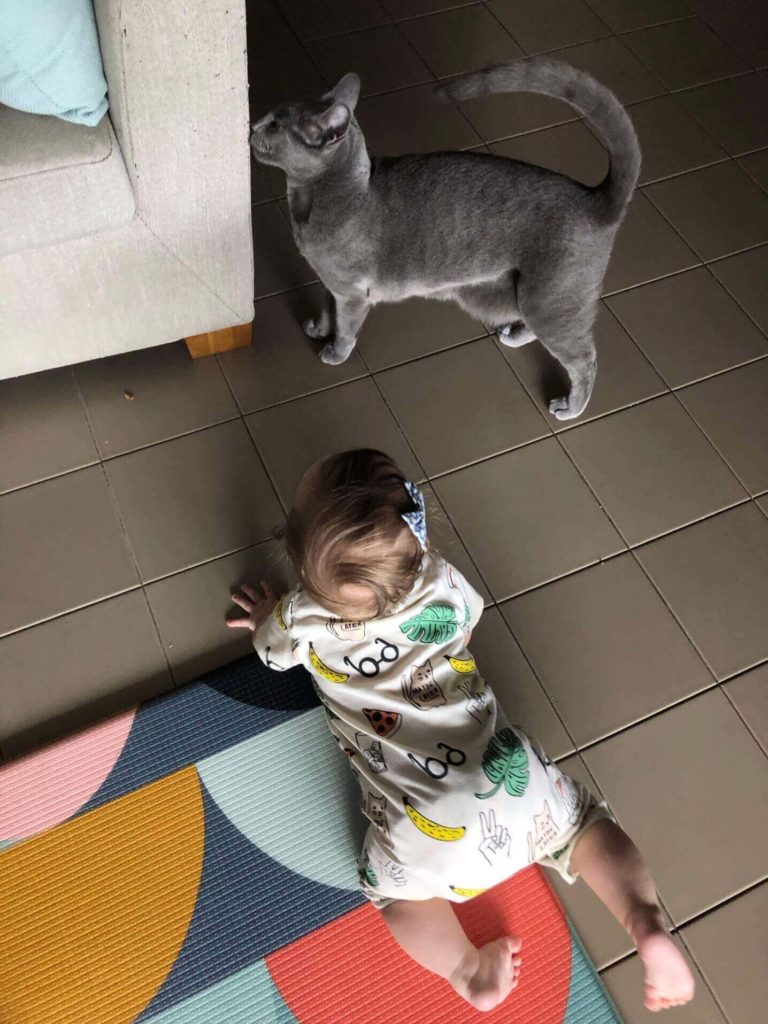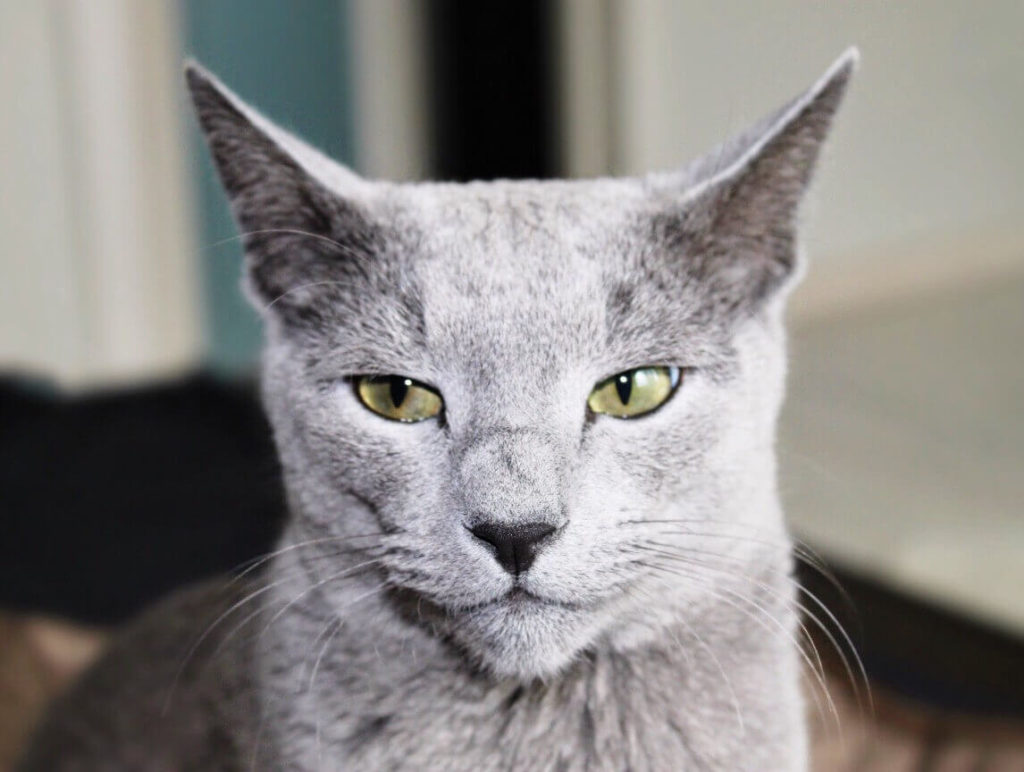If you’re someone who suffers from cat allergies but still wants to own a feline companion, you may have heard of the term “hypoallergenic cats.” While no cat is completely allergen-free, some breeds, like the Russian Blue, are considered hypoallergenic. This means that they produce fewer allergens than other cats, making them a potentially good choice for those with allergies. In this article, we’ll explore whether or not Russian Blue cats are truly hypoallergenic, and provide some tips for living with a Russian Blue if you have allergies.
Are Russian Blue Cats completely Hypoallergenic?
Ah, I’m sorry to say that Russian Blue cats are not completely allergen-free, but they are often considered hypoallergenic because they produce less of the protein called Fel D 1. This protein is responsible for causing unpleasant symptoms associated with cat allergies, like coughing, sneezing, and fever.
Understanding Cat Allergies
What Makes Cat Allergenic to Humans? Cat allergies are caused by a protein called Fel d1, which is found in a cat’s skin, saliva, and urine.
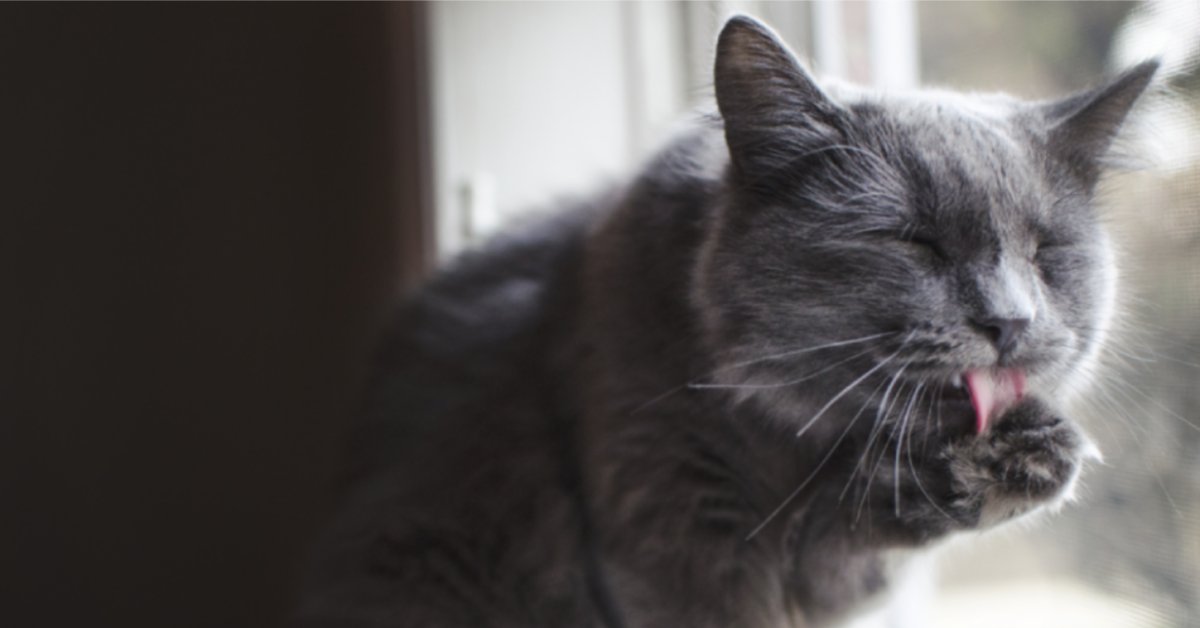
This protein is unique to cats and is the main cause of allergic reactions in humans. Even breeds of cats that produce lower levels of Fel d1 can still cause allergic reactions in some people.
Causes of Cat Allergies
Contrary to popular belief, cat hair or dander is not the main cause of cat allergies.
The main culprit is actually a cat’s saliva, which transfers the Fel d1 protein to their fur when they lick themselves clean.
The protein then dries up and becomes airborne, or it can be transferred to humans when they pet the cat.
Symptoms of Cat Allergies
Cat allergies can cause a range of symptoms, including sneezing, coughing, wheezing, runny or stuffy nose, itchy eyes, skin rashes or hives, and even asthma attacks in some people.
It’s important to note that the severity of the reaction can vary from person to person, and even from one exposure to the next.
What Does Hypoallergenic Mean?
Hypoallergenic means that a particular item, such as a cat, is less likely to cause an allergic reaction in people.
Hypoallergenic cats are those which produce fewer allergens than other breeds. Breeds such as the Russian Blue, Sphynx, or Devon Rex, make them a good choice for people with cat allergies.
They may have less fur, shed less, produce less saliva, or produce less of the Fel d1 protein to reduce allergen release.
The Myth of Hypoallergenic Cats
The idea of hypoallergenic cats has been a common misconception among cat lovers. While it is true that certain breeds, such as the Russian Blue, may produce less of the Fel d1 protein, which is responsible for cat allergies, there is no cat breed that is completely hypoallergenic.
The myth of hypoallergenic cats has been perpetuated by the pet industry and breeders who market certain cat breeds as hypoallergenic.
This can be misleading for people who suffer from cat allergies, as they may believe that they can own a cat without experiencing any symptoms.
Russian Blue cats are often marketed as hypoallergenic due to their low shedding and production of less dander, which can help reduce the amount of allergens released into the air.
However, it is important to note that individual reactions to cat allergens can vary and that even cats that produce less of the Fel d1 protein can still cause allergic reactions in some people.
Characteristics of Russian Blue Cats
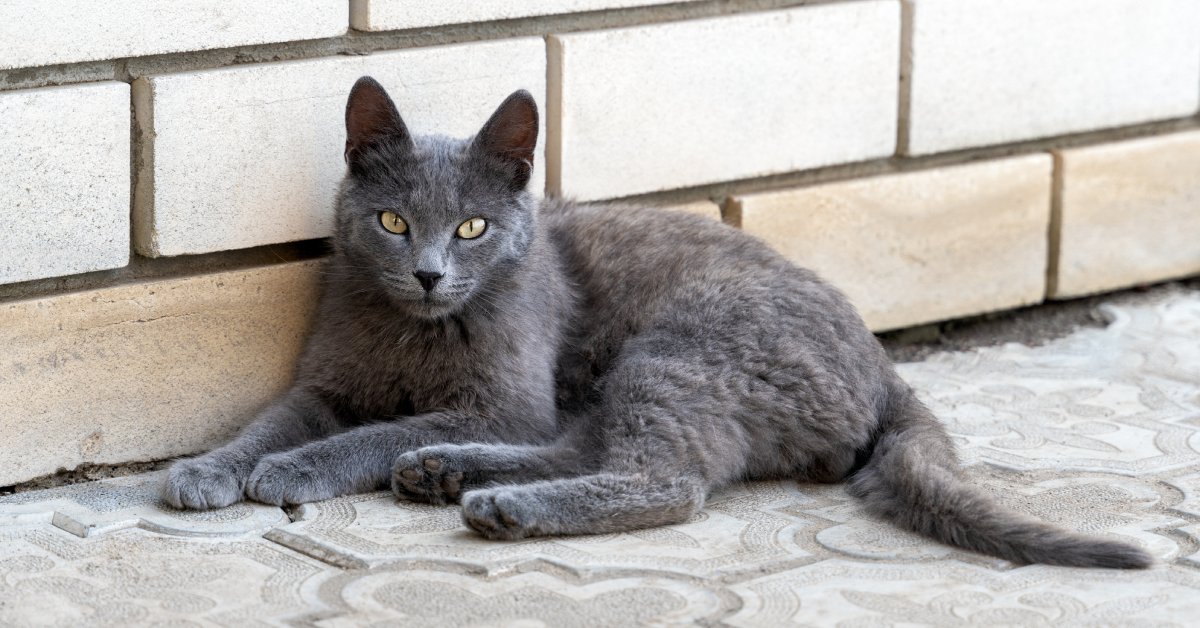
| Characteristic | Description |
| Size | Medium-sized with a muscular build |
| Coat | Short, dense, and plush with a silver-blue color |
| Eye Color | Bright green |
| Body Shape | Slim and graceful with a wedge-shaped head |
| Personality | Intelligent, playful, affectionate, and reserved with strangers |
| Activity Level | Moderate to high |
| Grooming Needs | Low maintenance due to short, dense coat |
Are Russian Blue Cats Hypoallergenic
While Russian Blue cats are often marketed as hypoallergenic, the truth is that no cat breed is completely hypoallergenic. All cats produce allergens, including Fel d 1 protein, which is the most common allergen associated with cats.
However, Russian Blues may produce less of this protein than other breeds, which can make them a better choice for people with allergies. It’s important to note that individual sensitivity to allergens can vary greatly, so what may be tolerable for one person may cause a reaction in another.
How Russian Blue Cats May Reduce Allergy Symptoms
Have you heard that some people with cat allergies can tolerate Russian Blue cats better than other breeds? It’s true! Russian Blues are often promoted as hypoallergenic because they produce lower levels of the Fel d 1 protein, the main allergen found in cat saliva, urine, and skin.
When cats groom themselves, they deposit the Fel d 1 protein onto their fur, which can then become airborne and trigger allergy symptoms in sensitive individuals. However, Russian Blues produce less of this protein, which may explain why some people experience fewer allergy symptoms around them.
It’s important to note that hypoallergenic doesn’t mean non-allergenic, and some people may still experience allergy symptoms around Russian Blues. Additionally, individual reactions to cat allergens can vary, so it’s always best to spend time with a cat before bringing one home to see how your body reacts.
Here is a detailed explanation of what makes Russian Blue Cat Hypoallergenic.
Low Allergy-causing Fel d1 Protein
People can experience different symptoms due to various allergens. Among the allergens, glycoproteins Fel d1 and Fel d4 are the most common ones for people who are allergic to cats. Fel d1 is present in the cat’s skin and urine, while Fel d4 is found in saliva. However, Russian Blue cats produce less glycoprotein Fel d1 than other breeds, which can result in fewer allergy symptoms. It is important to note that male Russian Blues produce more allergens than females. If you want to adopt a Russian Blue, choosing a female cat may be a better option. But if you prefer a male, you can always neuter him, which can decrease the production of allergens.
Less Fur Shedding
So, when a cat licks their body clean, the allergy-causing protein in saliva will build up on their fur and, when it dries, will shed or become airborne. If the cat sheds a lot, there will be more allergens around the house, and you may be more prone to getting allergies. But, the Russian Blue breed has short fur and sheds less, which means there will be less fur around the house to carry dried saliva (Fel-D1).
However, it doesn’t mean that they’re completely non-allergenic, just that they may cause fewer allergy symptoms. And, although they may shed more in the spring and fall, it’s still much less than other breeds. So, if you’re looking for a cat that may cause fewer allergy symptoms, a Russian Blue could be a great option!
Dense Coat
Have you seen a Russian Blue cat before? They have a really unique coat. It’s so dense and double-layered that their fur stands out at a 45-degree angle, which makes them look bigger than they really are.
You know what’s interesting? Researchers say that this thick coat may actually help protect people with allergies from experiencing severe symptoms.
The coat traps some of the allergens close to the cat’s skin, which means they don’t get spread around the house as much as with other breeds. Pretty cool, huh?
Fewer Dander
Did you know that cats naturally shed tiny flakes of skin cells called dander? It’s true! And even though all cats produce it, not all people are allergic to it. The problem is that the allergy-causing protein, Fel d1, can stick to the dander and get released into the air when the cat sheds its fur, causing allergic reactions in some people.
So, the more dander a cat sheds, the more allergens are present in the home. But don’t worry! Russian Blue cats have been found to have lower levels of dander than other breeds, which means they are less likely to cause severe allergies in most people.
Ways To Manage Allergic Reactions From Your Russian Blue
Russian Blue cats still produce allergens and, you might have to deal with the occasional reaction if you adopt one. So, What should you do? While it will require some effort from you, it is usually very much possible to manage your allergy from any adverse effects. Consider the following points to reduce your allergy symptoms:
Avoid Personal Room From Cat Access
The bedroom, where you spend a lot of time, should be close to your cat. It is useful for your betterment so that you can avoid allergens in your beds and improve your sleep quality.
Use HEPA Air Purifiers And Filters
Invest in good HEPA purifiers and filters to minimize airborne allergens but do change or clean them regularly.
Vacuuming And Sweeping
Sweeping and vacuuming more often can reduce pet dander, which contains allergy-causing protein. Make the cleaning task easier on yourself by minimizing carpets, textiles, or any fabrics that trap allergens in your house. Also, wear a mask during the cleaning session.
Wash Your Hands
Wash your hands frequently or regularly after petting or playing with your Russian Blue. However, never touch sensitive parts of your body, such as your eyes, nose, or mouth with your hands before washing. Use an aqueous cream for the treatment of itching.
Keep Your Russian Blue Healthy
Keeping your Russian Blue healthy with a proper diet or food can also help in less shedding and the production of dander. Research says that a cat diet containing a specific protein found in eggs can help reduce primary cat allergens.
Brushing Or Grooming Your Russian Blue
Daily brushing or grooming for a few minutes is way better to remove the excess hair & dander. It reduces the level of Fel d1 protein in the air & coat and also keeps the fur in perfect condition.
Consult With An Allergist
If your symptoms still interfere with your day-to-day life, then consult with an allergist for advice and medications. Also, apply for an allergy test to determine which cat allergen is the reason for your allergic response, and later you can plan accordingly.
Other Hypoallergenic Cat Breeds
While Russian Blue cats are often touted as hypoallergenic, there are actually several other cat breeds that are marketed as being better for people with allergies.
Sphynx cat
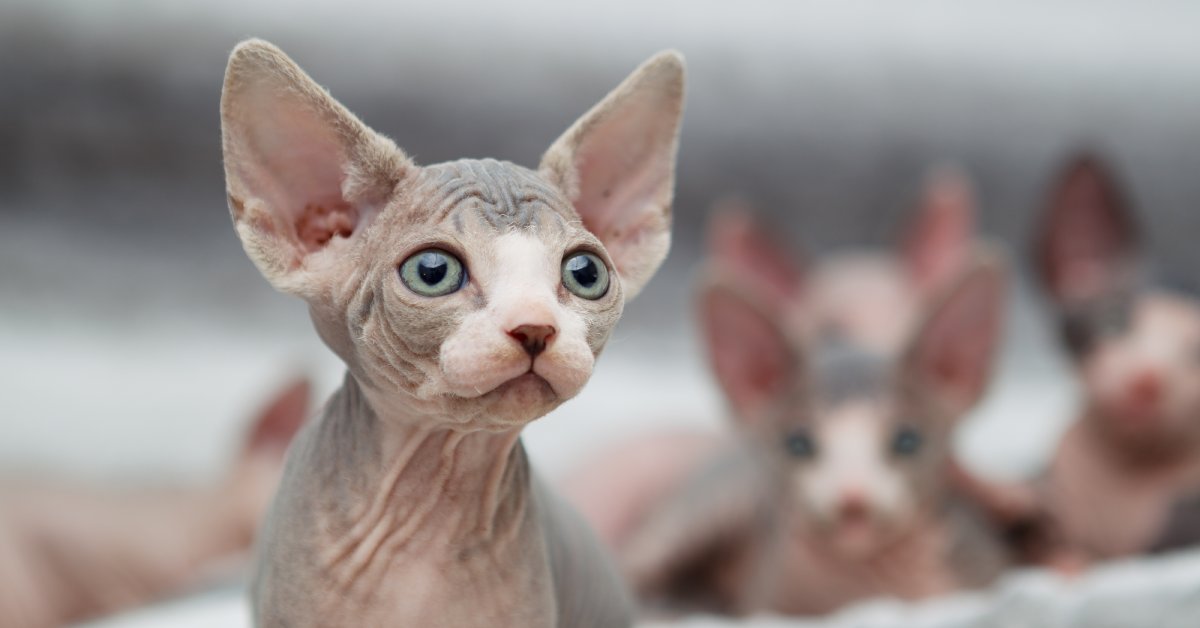
Sphynx cat, which is hairless and produces less dander than most other cat breeds. However, despite being hairless, Sphynx cats still produce allergens, so they may not be the best option for people with severe allergies.
Devon Rex

Another breed that is often marketed as hypoallergenic is the Devon Rex. These cats have curly hair and shed less than other breeds, which can help reduce the amount of allergens in the home. However, like with Sphynx cats, Devon Rex cats still produce allergens, so they may not be the best choice for people with severe allergies.
Cornish Rex

The Cornish Rex is another breed that is often marketed as hypoallergenic. These cats have very fine, curly hair that sheds very little, which can help reduce the amount of allergens in the home. However, like with other hypoallergenic breeds, Cornish Rex cats still produce allergens, so they may not be suitable for people with severe allergies.
Compared to these other breeds, Russian Blue cats are still considered one of the best options for people with allergies. This is because they produce less of the protein Fel d 1, which is the primary allergen in cats. However, it’s important to note that there is no such thing as a completely hypoallergenic cat, and even Russian Blues can still cause allergic reactions in some people.
If you’re considering getting a cat and you have allergies, it’s important to do your research and consider all of your options. While some breeds may produce fewer allergens than others, no cat is completely hypoallergenic, and it’s important to be prepared for the possibility of allergic reactions.
Considerations Before Adopting a Russian Blue Cat
Adopting a cat, or any pet, is a big decision that should not be taken lightly. Before bringing a Russian Blue cat into your home, there are several things to consider. Firstly, owning a cat is a long-term commitment, as they can live for up to 20 years. You will need to provide food, water, and shelter, as well as regular veterinary check-ups, vaccinations, and grooming. It is also important to consider the cost of unexpected medical expenses, such as emergencies or illnesses.
Additionally, if you or someone in your household has allergies, it is important to note that while Russian Blue cats are hypoallergenic, they may still produce some allergens. It is best to spend time with a Russian Blue cat before adoption to determine if any allergic reactions occur. Furthermore, if you have other pets in the home, it is important to consider if they will get along with a new cat.
When adopting a Russian Blue cat, it is important to find a reputable breeder or rescue organization. Take the time to research and ask questions about the cat’s health and background. It is also important to create a safe and comfortable living space for your new pet, with plenty of toys, scratching posts, and hiding places.
Owning a Russian Blue cat, or any pet, requires careful consideration and commitment. If you or someone in your household has allergies, it is important to spend time with the cat before adoption to determine if any allergic reactions occur.
Frequently Asked Questions
Are Russian Blue cats completely hypoallergenic?
While Russian Blue cats are often marketed as hypoallergenic, no cat breed is completely allergen-free. Russian Blues produce less of the allergenic protein Fel d 1 compared to other cat breeds, which may make them more tolerable for some people with allergies. However, individuals with severe allergies should still take precautions and consult with a medical professional before considering adopting a Russian Blue or any other cat breed.
Can someone with severe cat allergies live with a Russian Blue cat?
It is possible for someone with severe cat allergies to live with a Russian Blue cat, but it depends on the individual’s sensitivity and allergies. While Russian Blues produce less Fel d 1 allergen, which is the primary allergen associated with cats, they still produce some level of allergen. It’s recommended that anyone with severe allergies spends time with a Russian Blue before adopting one to determine if they will have a reaction.
How can I reduce my allergies to Russian Blue cats?
To reduce allergies to Russian Blue cats, it’s recommended to keep the home clean and free of dust and dander. Regular vacuuming, washing of bedding, and using air purifiers can also help. Keeping the cat well-groomed and bathing them regularly can reduce the amount of allergens on their fur. Allergy shots and over-the-counter medications can also provide relief for some people.
Do Russian Blue cats shed a lot?
Russian Blue cats are known for their short, dense, and plush coat. They shed minimally, making them an excellent choice for people who want a low-maintenance pet. However, shedding can increase during seasonal changes or when there is a change in their diet or environment. Regular grooming and brushing can help reduce shedding and prevent hairballs.
Is it possible to develop allergies to Russian Blue cats over time?
Yes, it is possible to develop allergies to Russian Blue cats over time, as with any other cat breed. While Russian Blues are known for producing less Fel d 1 allergen than other cats, they still produce it to some degree. Some people may not show signs of an allergy at first, but repeated exposure can lead to the development of symptoms. It’s important to be aware of this possibility before adopting any pet.
Conclusion
Russian Blue cat is not truly hypoallergenic even if it sheds less and tends to produce a lower level of Fel d1 protein than other breeds. The amount of Fel d1 in Russian Blue can also vary between individuals and even the same litter. So, adopting a Russian Blue considered hypoallergenic will still not guarantee you would not suffer an allergic reaction.
However, Russian Blue still is an on-list better choice for cat allergy sufferers. Though living with it will mean taking tests first, making a few sacrifices & plans accordingly, and putting efforts to manage the allergy.


